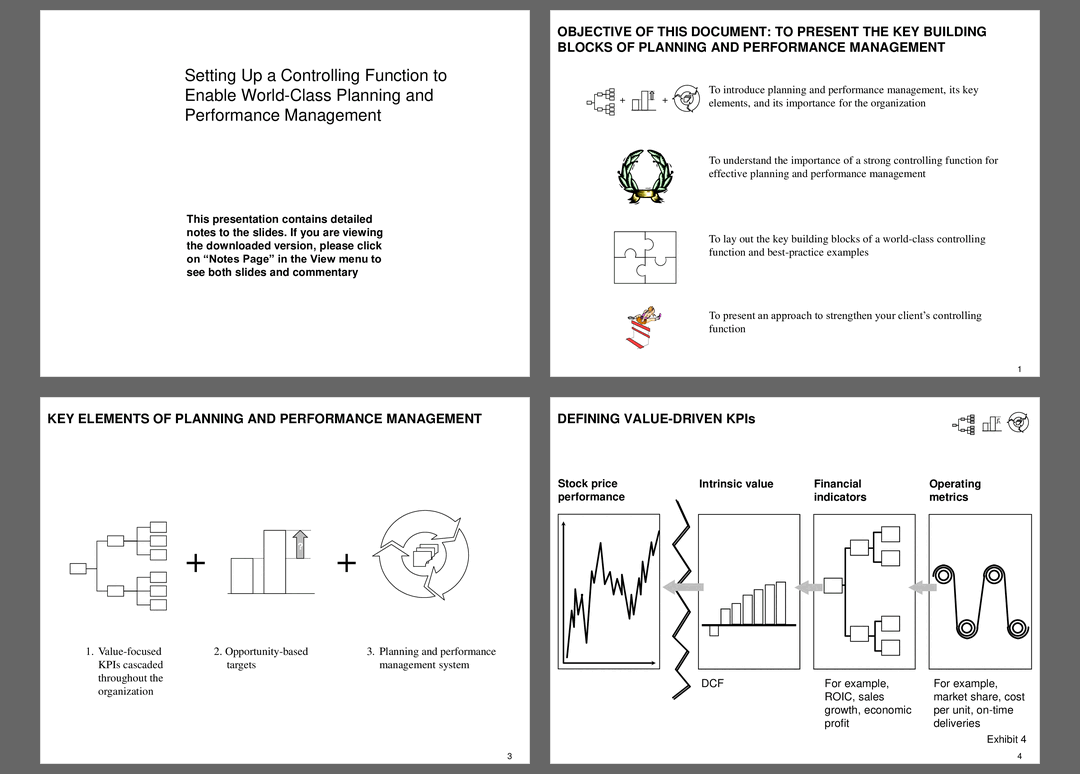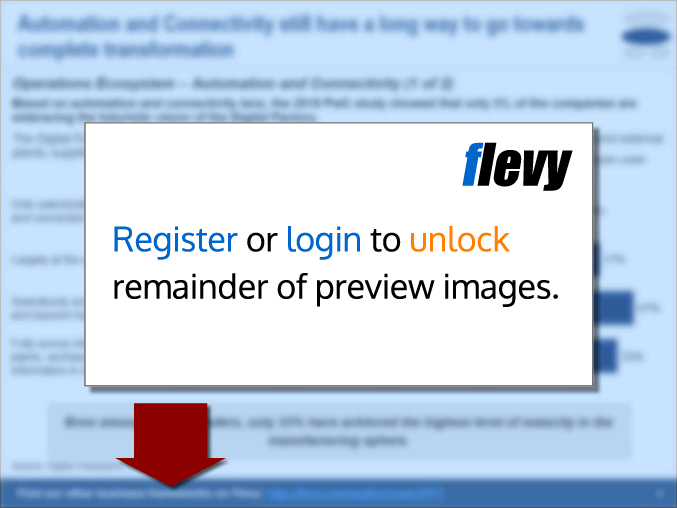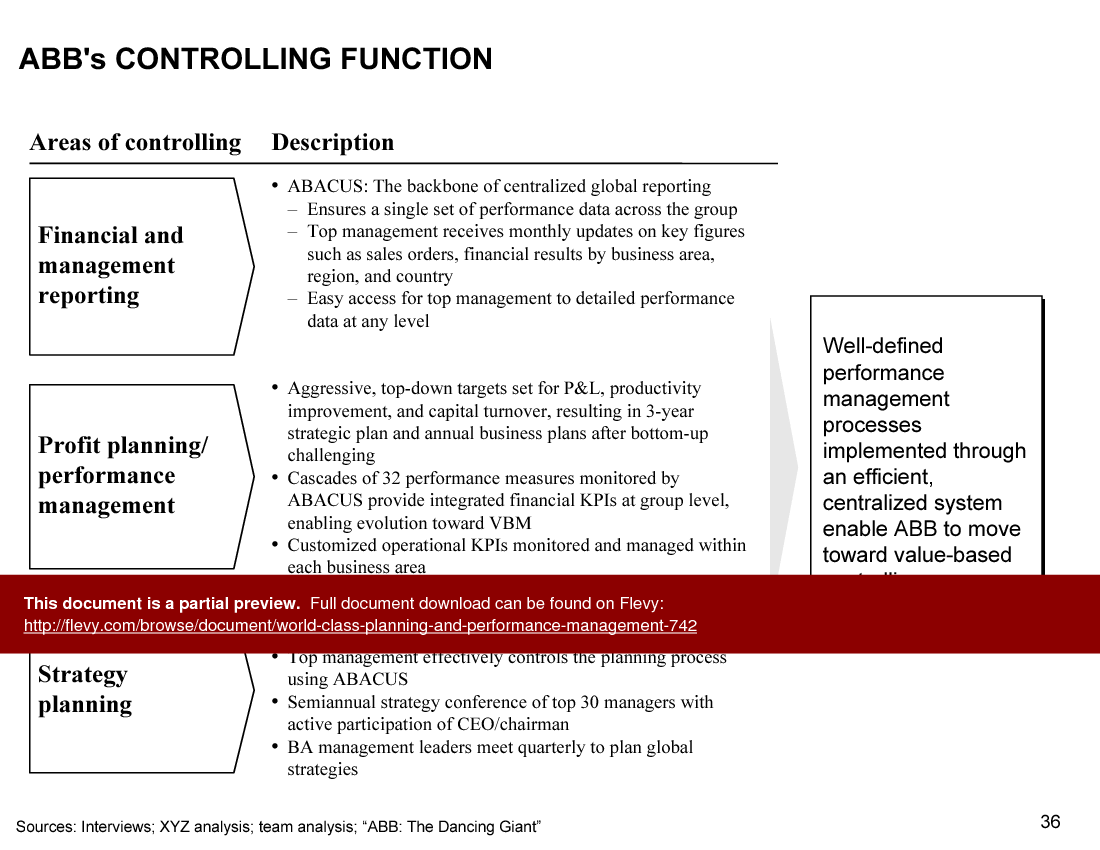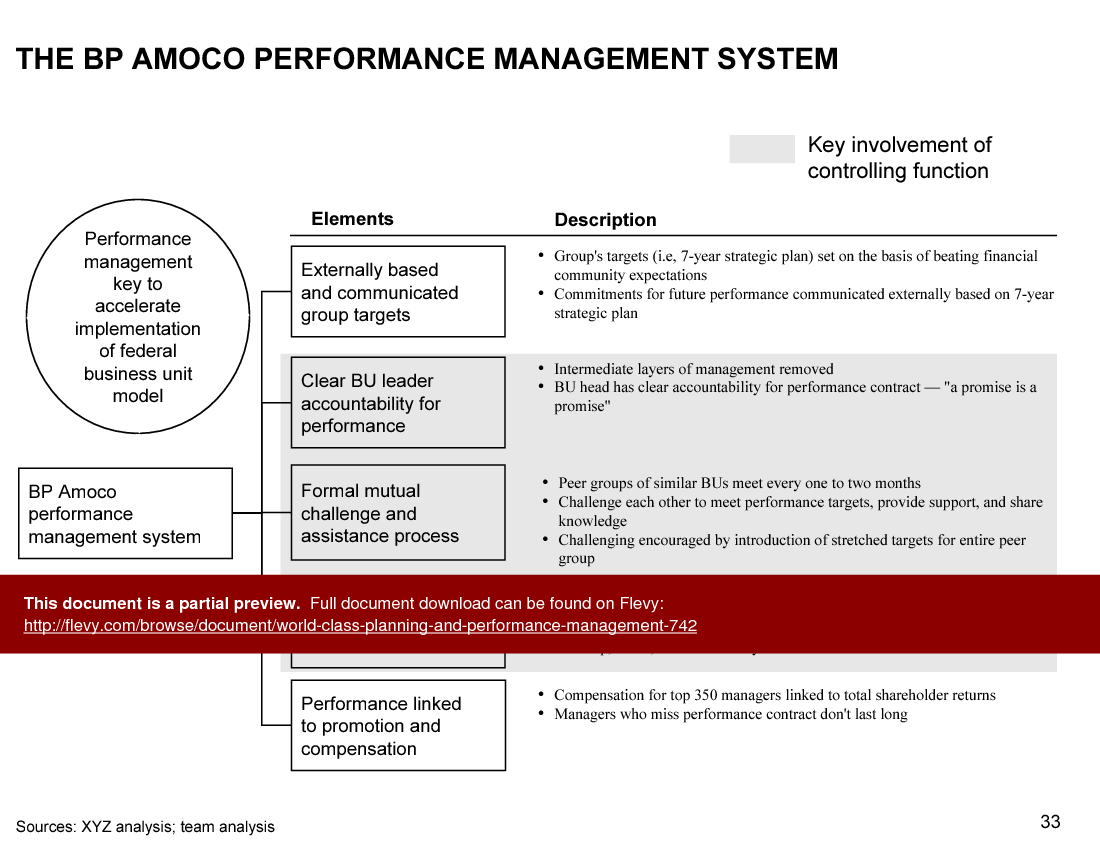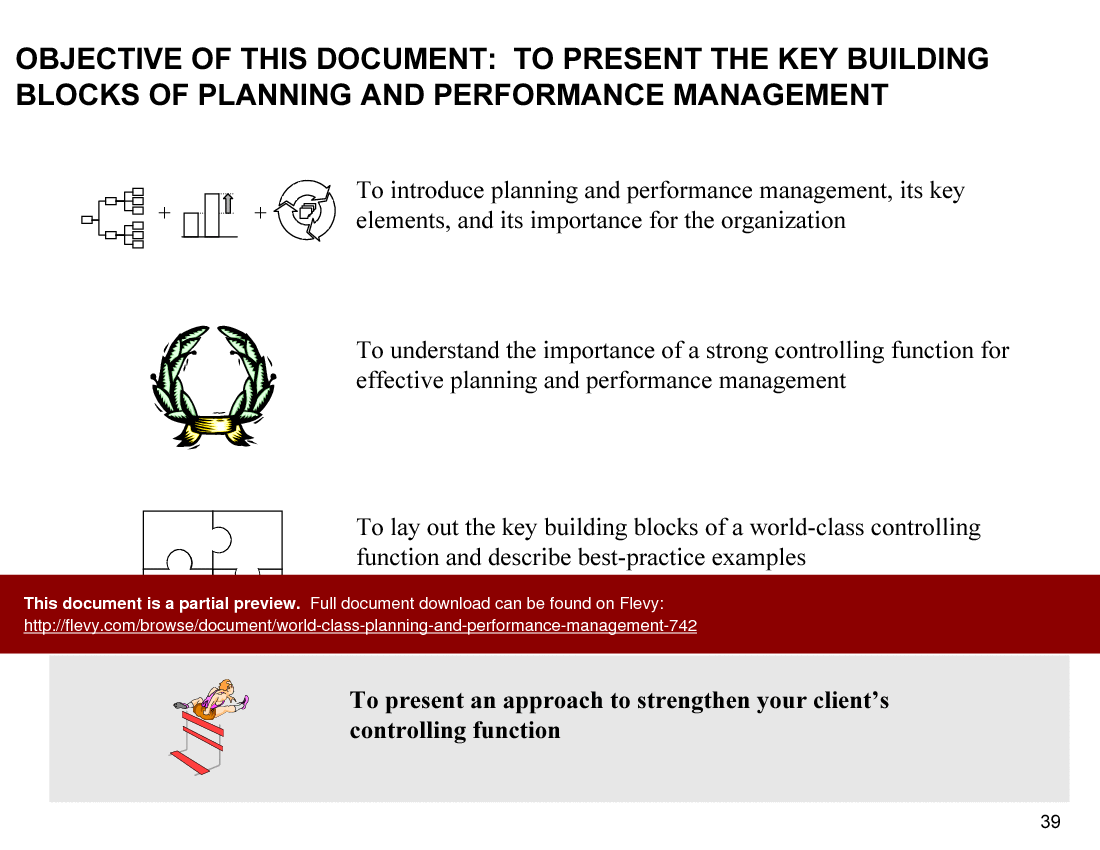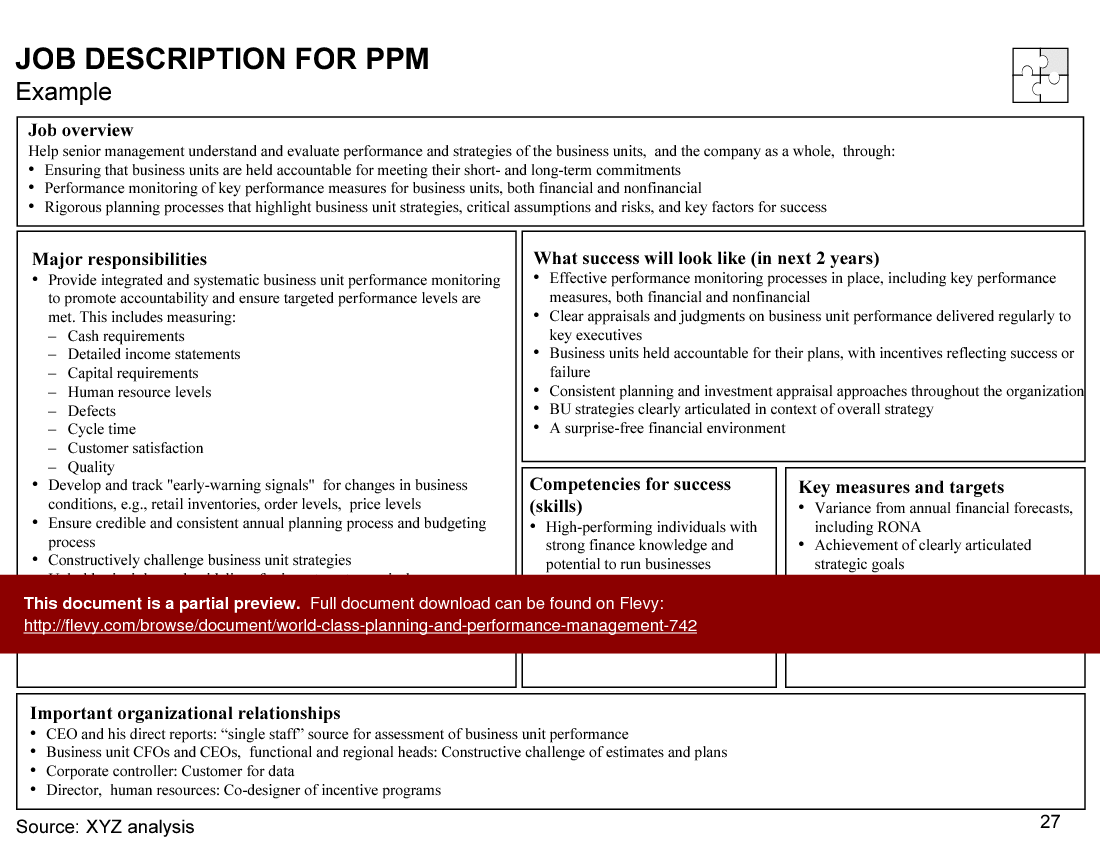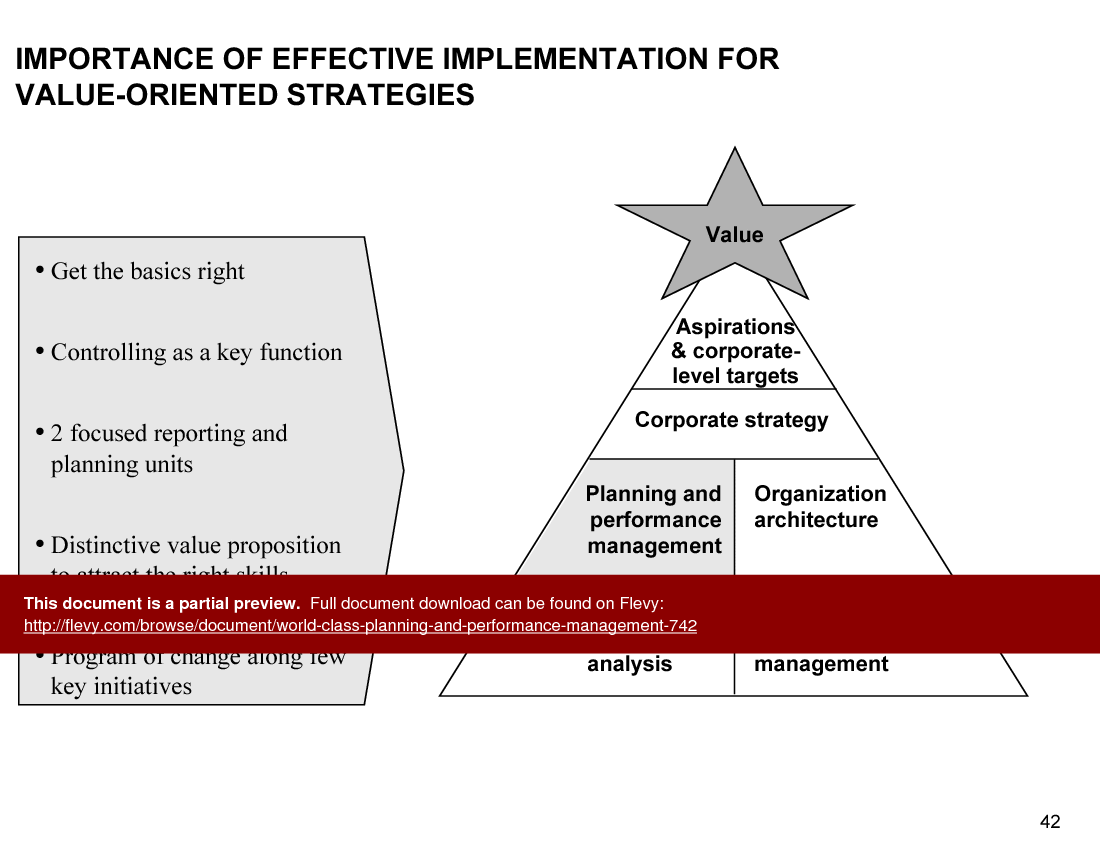World Class Planning & Performance Management (PowerPoint PPT Slide Deck)
PowerPoint (PPT) 43 Slides
STRATEGIC PLANNING PPT DESCRIPTION
This presentation is to introduce planning and performance management, its key elements, and its importance for the organization. In addition, it outlines the importance of a strong controlling function for effective planning and performance management. The document also lays out the key building blocks of a world-class controlling function and best-practice examples, and presents an approach to strengthen your controlling function. The deck has 42 slides and contains detailed notes to the slides.
This comprehensive presentation delves into the top-down identification of value drivers, providing a detailed ROIC tree to help you pinpoint key financial KPIs. It emphasizes accountability across various organizational levels, ensuring that every department contributes to the overall financial health. This approach not only clarifies roles, but also aligns incentives with performance, driving a culture of accountability and excellence.
Key principles for cascading KPIs throughout the organization are meticulously outlined. The document stresses the importance of clear role responsibilities and boundaries, coupled with explicit and simple performance contracts. This ensures that every team member understands their contribution to the company's success, fostering a unified effort towards common goals.
The presentation also highlights the critical responsibilities needed to ensure consistent data definition and tracking of KPIs. It provides a structured approach to financial planning and controlling, integrating nonfinancial KPIs into the data warehouse. This holistic view of performance management enables a more accurate and comprehensive assessment of the organization's health.
Setting targets is another crucial aspect covered in this document. It explores various options, from stand-alone budgets to integrated strategic plans, and rolling forecasts. This flexibility allows organizations to choose the most suitable approach based on their unique needs and market conditions. The emphasis on aligning strategic plans with capital market expectations and industry trends ensures that your organization remains competitive and forward-thinking.
Got a question about the product? Email us at support@flevy.com or ask the author directly by using the "Ask the Author a Question" form. If you cannot view the preview above this document description, go here to view the large preview instead.
Source: Best Practices in Strategic Planning, Performance Management PowerPoint Slides: World Class Planning & Performance Management PowerPoint (PPT) Presentation Slide Deck, Documents & Files
STRATEGIC PLANNING PPT SLIDES
